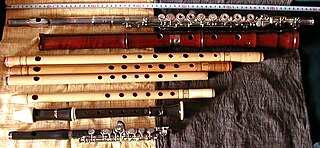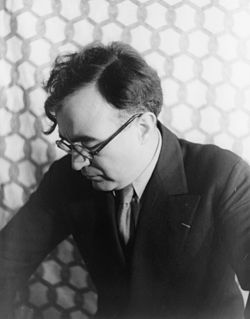The Symphony No. 1 of Roger Sessions is a symphony in three movements, in E minor.

Roger Huntington Sessions was an American composer, teacher, and writer on music.
A movement is a self-contained part of a musical composition or musical form. While individual or selected movements from a composition are sometimes performed separately, a performance of the complete work requires all the movements to be performed in succession. A movement is a section, "a major structural unit perceived as the result of the coincidence of relatively large numbers of structural phenomena".
A unit of a larger work that may stand by itself as a complete composition. Such divisions are usually self-contained. Most often the sequence of movements is arranged fast-slow-fast or in some other order that provides contrast.

E minor is a minor scale based on E, consisting of the pitches E, F♯, G, A, B, C, and D. Its key signature has one sharp. Its relative major is G major and its parallel major is E major.
Contents
The three movements are as follows: [1]
- Giusto
- Largo
- Allegro vivace
It was completed in January 1927, [2] and premiered by Serge Koussevitzky and the Boston Symphony Orchestra on April 22, 1927. [3] It was dedicated to Sessions' father Archibald. [2]

Serge Alexandrovich Koussevitzky was a Russian-born conductor, composer and double-bassist, known for his long tenure as music director of the Boston Symphony Orchestra from 1924 to 1949.

The Boston Symphony Orchestra (BSO) is an American orchestra based in Boston, Massachusetts. It is one of the five major American symphony orchestras commonly referred to as the "Big Five". Founded in 1881, the BSO plays most of its concerts at Boston's Symphony Hall and in the summer performs at Tanglewood.
It is scored for three flutes (one doubling piccolo), three oboes (one doubling English horn), four clarinets, three bassoons, four horns, three trumpets, three trombones, one tuba, timpani, percussion, piano, and strings. [4]

The flute is a family of musical instruments in the woodwind group. Unlike woodwind instruments with reeds, a flute is an aerophone or reedless wind instrument that produces its sound from the flow of air across an opening. According to the instrument classification of Hornbostel–Sachs, flutes are categorized as edge-blown aerophones. A musician who plays the flute can be referred to as a flute player, flautist, flutist or, less commonly, fluter or flutenist.

Oboes are a family of double reed woodwind instruments. The most common oboe plays in the treble or soprano range. Oboes are usually made of wood, but there are also oboes made of synthetic materials. A soprano oboe measures roughly 65 cm long, with metal keys, a conical bore and a flared bell. Sound is produced by blowing into the reed at a sufficient air pressure, causing it to vibrate with the air column. The distinctive tone is versatile and has been described as "bright". When oboe is used alone, it is generally taken to mean the treble instrument rather than other instruments of the family, such as the bass oboe, the cor anglais, or oboe d'amore

The clarinet is a musical-instrument family belonging to the group known as the woodwind instruments. It has a single-reed mouthpiece, a straight, cylindrical tube with an almost cylindrical bore, and a flared bell. A person who plays a clarinet is called a clarinetist.
Andrea Olmstead describes all of Sessions's symphonies as "serious" and "funereal". [5] In contrast, Prausnitz describes this symphony as having "a joyfully jazzy, organized vigor in its fast outer movements," in contrast with the middle movement, "a somberly reflective Largo that yields nothing to overt emotion. ..." [6]


